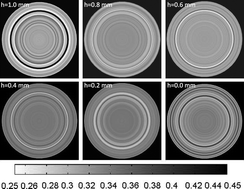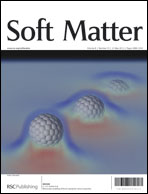Internal microstructures in shearing giant electrorheological fluids
Abstract
The macroscopic physical properties of giant electrorheological (GER) fluids are crucially dependent on their internal particle microstructure. However, GER fluids are often sheared in work, which makes it difficult to clearly observe their internal microstructure via existing experimental tools. Here, an experimental method has been developed to observe the lamellar microstructures of GER fluids, which fill the space between two relatively rotating parallel disk electrodes (disk–disk geometry). Nevertheless, only microstructures in surface regions can be observed in the shearing process via some experimental approaches. We incorporated two fluid phase models of ER fluids and the mechanism of GER fluids in order to study the GER fluids in the shearing process. Internal microstructures of GER fluids shearing in the whole region simultaneously were discovered for the first time. The internal system produces a variety of complex patterns and dynamics. The patterns are caused by the fluctuation frequency of radial shear bands; and there exist vertical shear bands which give rise to delamination perpendicular to the flow direction. The distribution of radial and vertical shear bands in the inner geometry is governed by the Onsager principle of minimum energy dissipation rate.


 Please wait while we load your content...
Please wait while we load your content...